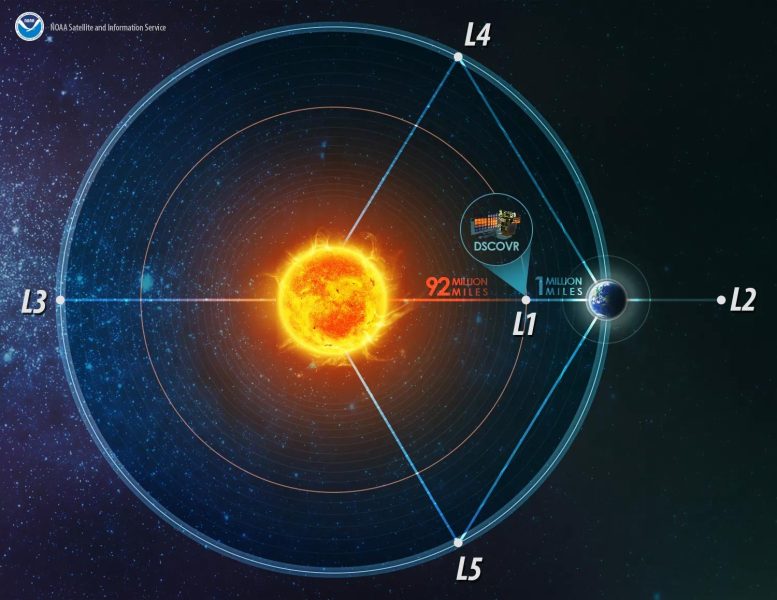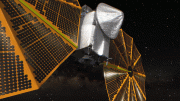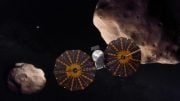What are Lagrange points? They are places around a planet’s orbit where the gravitational pull of the planet and the Sun and the motion of the orbit combine to create an equilibrium — requiring very little energy to stay in orbit.
NASA’s Lucy mission will visit Jupiter’s Lagrange points where the Trojan asteroids have been gravitationally trapped for billions of years, holding clues to the formation of our solar system. NASA scientist Dr. Adriana Ocampo has more.
Lagrange points are named after the Italian astronomer and mathematician who first proposed them. These are places in our solar system where the gravitational pull of any two planetary bodies, as well as the motion of their orbit, combine to create an equilibrium. It takes very little energy to orbit these positions.
Objects that are sent to these locations in space either tend to stay there naturally or can be kept there with minimal energy because the forces are in balance.
NASA’s taking advantage of those Lagrange Points to send two new extraordinary missions. The James Webb Space Telescope will orbit the Sun at Earth’s Lagrange Point number two, allowing the telescope to stay in line with Earth as it moves around the Sun and retain that orbit using very little fuel.
NASA’s Lucy mission will study the pristine Trojan asteroids, the remnants of our solar system that have been gravitationally trapped around Jupiter’s Lagrange point number four and Lagrange Point number five for over four and a half billion years.
So, what are Lagrange points? They are places in our solar system where objects can orbit the Sun at the same speed as a planet staying in the same place relative to both of them.
We Asked a NASA Expert Video Series
- Why is Venus Called Earth’s Evil Twin?
- Is NASA Really Crashing a Spacecraft Into an Asteroid?
- Is NASA Aware of Any Earth-Threatening Asteroids?
- When Was the Last Time an Asteroid Hit Earth?
- How Did Perseverance Mars Rover Pick Its Landing Spot?
- What if an Asteroid Was Going To Hit Earth?
- Did Mars Ever Look Like Earth?
- What Are Lagrange Points?
- What Are the Trojan Asteroids?
- Is There Oxygen on Mars?
- Does NASA Know About All the Asteroids?
- Do Aliens Exist?
- Is There Weather on Mars?
- Will an Asteroid Ever Hit Earth?
- Is Mars Habitable?
- Could Microbes Survive a Trip to Mars?









Be the first to comment on "We Asked a NASA Scientist: What Are Lagrange Points? [Video]"